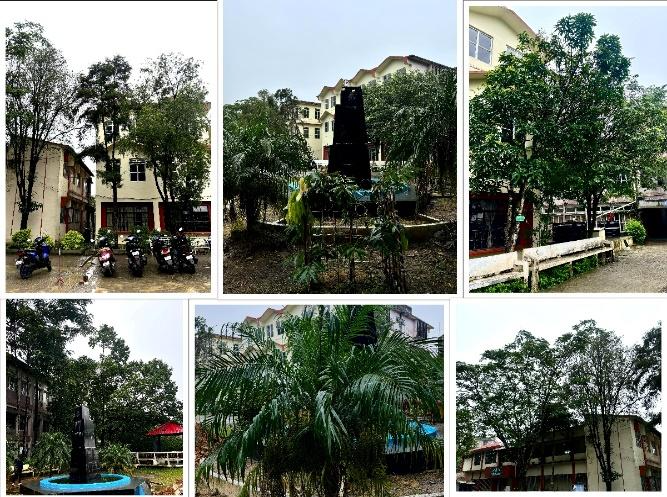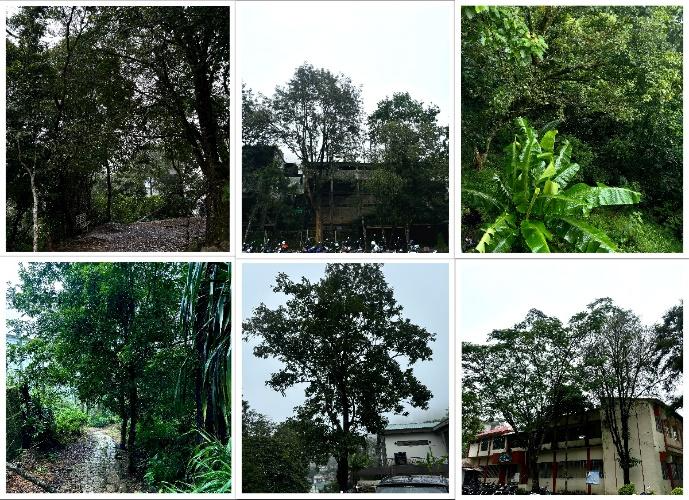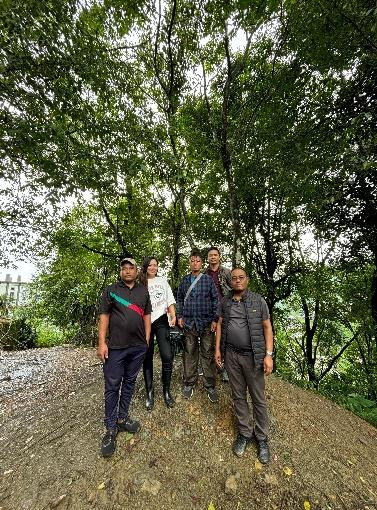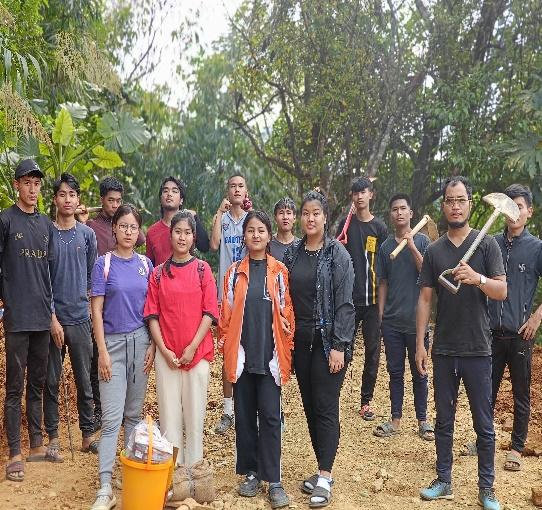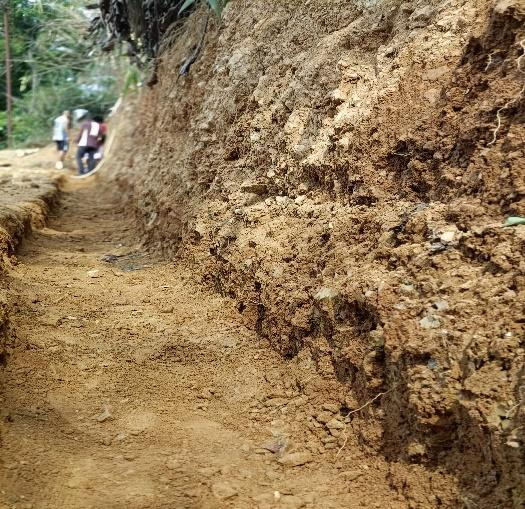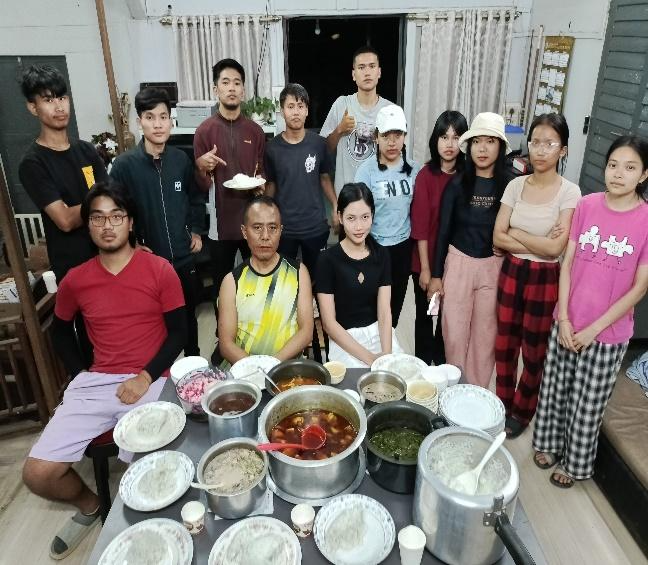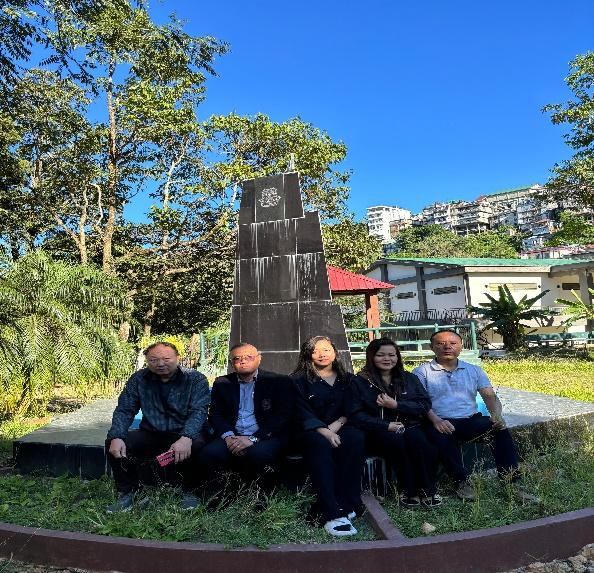Field Work Report
(2023-2024)
ith a very limited fund received from the Office, i.e., Rs 20,000/-(Rupees Twenty thousand only), we are planning to organize a Field Trip at Palak Dil (PalaTipo) on 20th February, 2024, using HoD’s car and hiring one Maxi Cab (Sumo). It remains cancelled in the last hour due to unavoidable reasons like breakdown of HoD’s vehicle and illness of two students.
As we couldn’t organize Field Trip as scheduled, Study of Plant Community within Lunglei Govt. College Campus was carried out on 11th April, 2024.
Objective of study:
1. To study the overview of vegetation of College Campus
2. To study the community composition of trees, shrubs and herbs within the campus.
3. Field explanation on impact of disturbances on community succession
Outcomes:
It has been found that trees in the campus are mostly exotic and the native ones are light loving, that is, most of them are species which are found only in the open where there is more sunlight. Common ones are Thuja occidentalis, Schima walichii, Bauhinia variegata, Erythrina indica, Delonix regia, Brachypterum robusta, Ficus semicordata, Ficus simplicissima, Prunus cerasoides, Grevillea robusta, Sycopsis griffithiana, Sterculia villosa, Trema orientale, Bischofia javanica, Melaleuca linearis and Calliandra surinamensis are more common ones.
As tree density is declining and more sunlight can penetrate, community composition also changes from tree community to shrubs and herbaceous community. Among shrubs Chromolaena odorata (Christmas bush), Aganope thyrsiflora(East Himalayan Derris), and Musa ochracea(crepe banana) were more common while Species of Asteraceae, like Mikania micrantha, Vernonia sp., Acmella sp., Sonchus sp., Ageratum connizoides, Bidens pilos and Blumea lanceolaria are dominant over other species. Grasses like Panicum sp., Paspalum sp., Digitaria sp., Imperata cylindrica and Cyperus rotundus, and Ferns like Pteris sp., Pteridium sp., Microsorum sp., are more abundant. Curculigo capitulata, Dimetia scandens, Mimosa pudica and Solena heterophylla are also common among herbs.
Activity Report:
Students were given explanations on how anthropogenic activities, like recent construction of College buildings like Library, Auditorium, can have adverse effect on the vegetation of the area by felling trees and clearing of shrubs and herbaceous plants. They were shown how canopy cover alters and comparatively sparse to that of the less disturbed sites within the campus. On 11th April, 2024, with a light Social work in the Greenhouse Construction site, cutting and clearing the mud for Greenhouse side drain. It was followed by dinner in the evening. A total of twenty one (21) students, 13 from VI Semester and 8 from IV Semester, with four teachers, namely, Dr. Lalfakwma, Mr. C. Lalthanpuia, Mr. Vanlalreia Ralte and Ms P.C. Lalbiaknii, participated in the activity. With the help of experts from Forest Department on 1st August, 2024, vernacular (Mizo) name of trees within the Campus were listed by Mr RK Vanlalsiammawia and Ms P.C. Lalbiaknii. They were identified using literatures and Plant identifiers (Plants of the World Online).
Documentary Photos:
Photographs documenting departmental activities, including plant identification and social work related to the construction of greenhouse.

